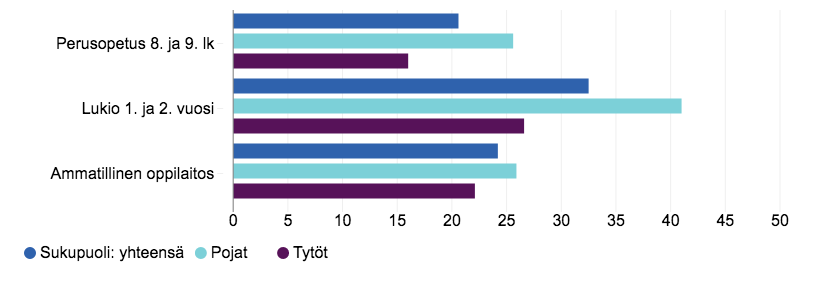
Young people get their news from social media – how could Yle reach them?
Young people consider content, trends, familiarity and image most important in a news service. To reach young audience, news need to be told from their own point of view.
As part of Yle Beta project, we helped to carry out a user study for Yle’s digital news services. The study found out what young people aged 15–16 think about Yle’s current news services and what types of services they would need. According to the results, Yle’s news services in their present form do not match the interests of young people as well as they could.
Young people are an important user segment for Yle’s digital news services, but reaching them has been a challenge. A survey commissioned by Yle revealed that social media are currently the most important news source for young people (aged 18–24), reaching 70 percent of young people in comparison to 42 percent of people of all ages. What the results don’t tell us, however, is how much of the total time spent on social media is given to news content. According to Reuters’ Digital News Report 2017, social media is primarily used for other purposes than following the news.
Traditional news sources compete with other media
The study indicated that, on average, young people use eight apps per day, even though individual answers varied from two to as many as twenty. This is consistent with App Annie’s international report (2017), according to which the average mobile user opens ten apps each day.
Every respondent used YouTube, Instagram, Snapchat and WhatsApp on a daily basis. These four apps have one factor in common: other young people. Above all, the young are interested in what other young people are doing and talking about. They also see a wider range of topics as news and follow them through new channels. For example, YouTube’s Trending list and Instagram’s Search & Explore tab are popular and sometimes feature news content.
The younger the audience, the lower the popularity of traditional news media. On the basis of our user study, 15–16-year-olds don’t follow the news actively; rather, they come across them while browsing social media or hear about them at home, at school or from friends. If the family watches TV news, they can be a fairly important news source for young people. When we asked young people about dedicated news apps, some mentioned Ilta-Sanomat, Facebook, YouTube, Reddit and the Daily Mail’s Snapchat channel. Young people use browsers to look for news and information but, apart from the above, weren’t able to name any specific websites.

A screen capture of the school health survey which, among other things, investigated how many 8th and 9th graders, high school students and vocational students followed the news on TV or the internet or read newspapers on most days after school in 2017.
Entertaining and relevant is interesting
The young respondents would like to see well-explained news content that is relevant to their own lives and told in a way they can relate to. Current events and phenomena, such as natural disasters or the success of Lauri Markkanen, interest the young as much as the old. Topics that young people can relate to, like social media, school stress or hobbies are particularly interesting. Funny and entertaining content, like sports, celebrities or the joke that is the West Metro, speak to youth.
The importance of entertainment was also reflected in the survey commissioned by Yle: according to the results, 52 percent of 18–24-year-olds think that entertainment is a very important news topic. The older the audience gets, the less value they place on entertainment news – among pensioners, the figure has shrunk to just 7 percent.
Young people want to know what other young people are talking about. Like YouTube’s Trending list and Instagram’s Search & Explore, the Most Read lists of news services interest them.
Young people are more likely to be interested in a service that is already familiar or popular. In addition, the service should have an image that offers something special specifically for young people. Overall, young people felt that Yle was a distant news source aimed at older age groups. Personalization and interesting content could help change this image, which the TV streaming service Yle Areena has already succeeded in.
We asked young people to try Yle’s existing news services, Yle Uutisvahti and the Yle.fi app. The clear layout and option to personalize the content received good feedback. Content-wise, they thought that the services contain a lot of political and social news, which should be tackled from a more interesting perspective and explained in more detail.
The user study consisted of four workshops held at primary schools and high schools in Helsinki. At the workshops, we met with a total of 70 young people aged 15–16. The themes of the workshops were daily smartphone use, following the news on social media and apps, and interesting news content.



